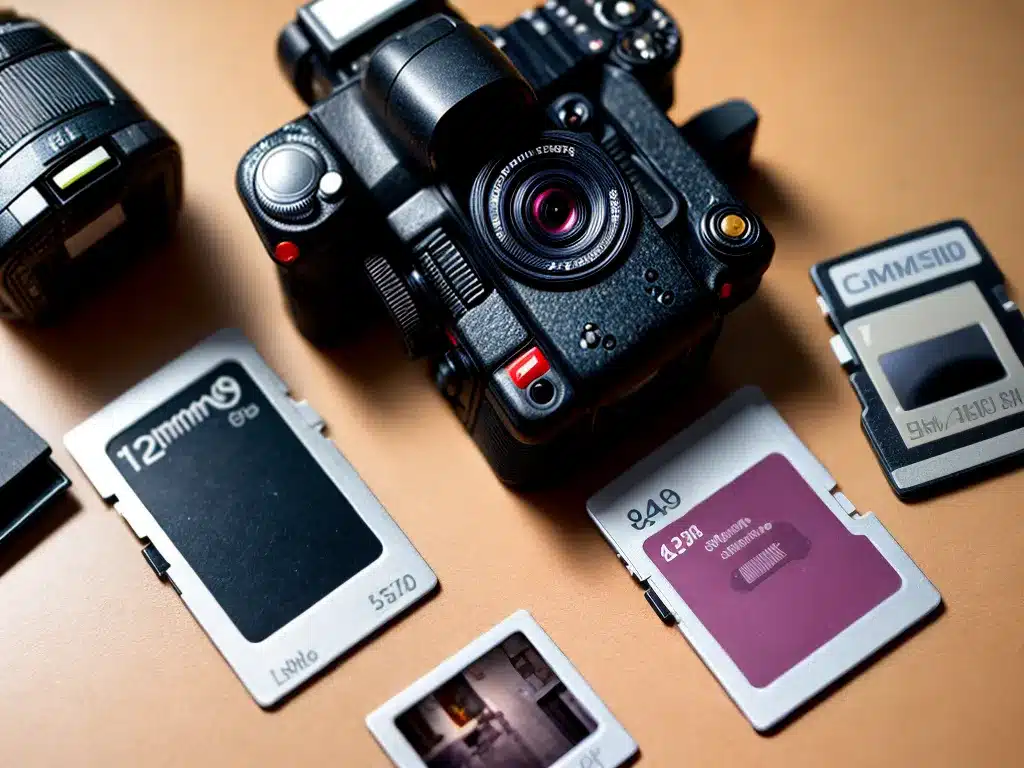
Introduction
Losing photos from your camera’s memory card can be devastating. As an avid photographer, I know how heartbreaking it is to lose irreplaceable photos of vacations, weddings, graduations, and other important life events. Thankfully, there are several options for trying to recover lost photos from common camera memory cards. In this article, I will provide an in-depth look at the most effective lost photo recovery options for the main types of camera memory cards.
SD Cards
Secure Digital (SD) cards are one of the most widely used types of memory cards in digital cameras. Their compact size and affordability make them a popular storage choice. However, their small size also makes them easy to misplace and prone to corruption.
If you lose photos from an SD card, the first recovery option is to use recovery software. Programs like Recuva, Stellar Photo Recovery, and EaseUS are designed to scan SD cards and retrieve deleted photos. I’ve had the most success using Recuva. It’s free and easy to use. To recover photos, I connect the SD card to my computer via a card reader, launch Recuva, select the drive associated with the SD card, choose “Pictures” as the file type, and click “Scan”. It finds any recoverable photos and allows you to save them to another location.
If Recuva doesn’t find your photos, try a more advanced paid solution like Stellar Photo Recovery. It offers deep scanning to locate photos that may not be found with free software. Stellar Photo Recovery costs $39.99 for a single license but could be worth it if you need to recover irreplaceable photos.
As a last resort, use a data recovery service. Companies like DriveSavers and Kroll Ontrack can recover photos from severely damaged media. However, these services are expensive, often $500 or more. Send your card only if the photos are invaluable.
MicroSD Cards
MicroSD cards are essentially miniaturized SD cards, commonly used in action cameras like GoPros. They carry additional risks because their tiny size makes them easy to lose and their design makes them prone to breakage.
Like SD cards, start by using photo recovery software. Programs like Recuva, Stellar, and EaseUS work equally well on MicroSD cards. Follow the same procedure of connecting the card via a reader and scanning for deleted photos.
If the card is physically damaged, you may need more specialized data recovery. A broken MicroSD card has exposed internal circuitry. Do not try connecting it to your computer, as it could damage the card or computer. Instead, carefully package it and ship to a recovery service. They have clean room environments to safely repair damaged cards and rescue data. Two reputable options are Desert Data Recovery, who charge ~$300 for MicroSD recovery, and $500 Data Recovery, who charge $300-$1000 based on severity.
CompactFlash (CF) Cards
CompactFlash cards offer high capacities in a robust physical design. However, their performance and cost make them less common in consumer cameras now.
The recovery process is much the same as smaller cards. Use software like Recuva first. CF cards are less prone to physical damage, but if the pins are bent or corroded, send to a repair service first to salvage the card before attempting recovery. Once repaired, insert in a reader or camera and run recovery software. If all else fails, a lab like DriveSavers can perform forensic recovery from catastrophically failed CF cards.
XQD and CFast Cards
XQD and CFast cards are newer, high-end card formats found in advanced DSLR and mirrorless cameras and professional video cameras. Their large capacities and blazing speeds come at a cost – they are some of the most expensive memory cards available.
Recovery software is still the best first step for deleted photos. These cards use standard file systems like FAT32 or exFAT rather than exotic proprietary formats, so Recuva and other utilities support them. However, these cards’ value means sending to a pro service makes more economic sense than consumer-grade cards if software recovery fails. Ontrack and DriveSavers have extensive experience recovering XQD and CFast cards, though costs will run over $1000 in many cases due to their complexity.
Key Takeaways
-
First, attempt recovery with free software like Recuva. Paid software like Stellar can recover more stubborn cases.
-
Physically damaged cards may need repair before recovery software can read them. Use reputable data recovery services for this.
-
Advanced cards like XQD and CFast warrant sending to professional recovery labs if needed due to their high cost.
-
Act quickly! Continued use of a card with deleted photos lowers the chances of recovery.
Losing photos is painful. With a strategic approach and the right tools, you can maximize your chances of getting them back. Follow these guidelines when choosing a recovery method for your camera memory card.












